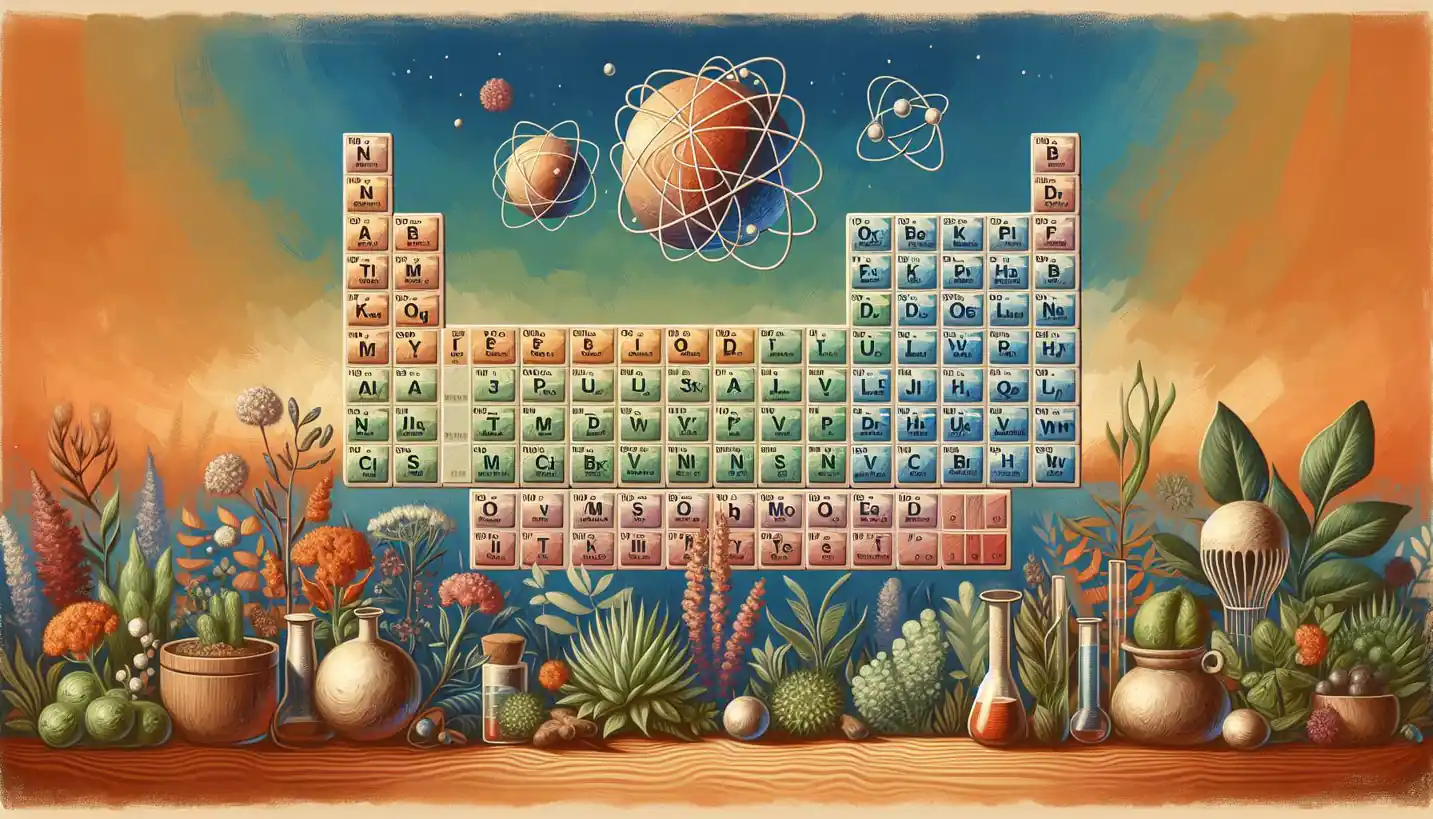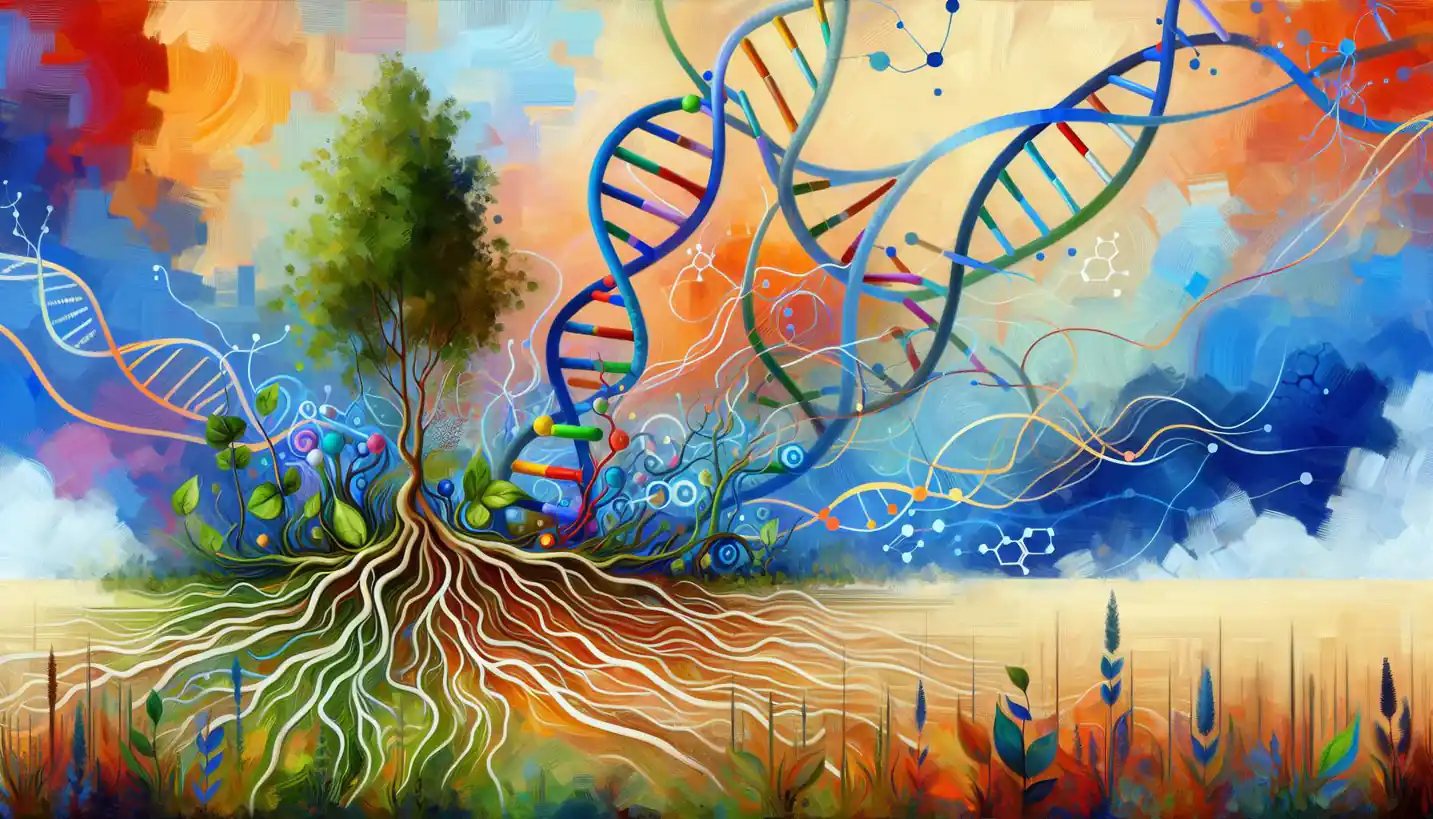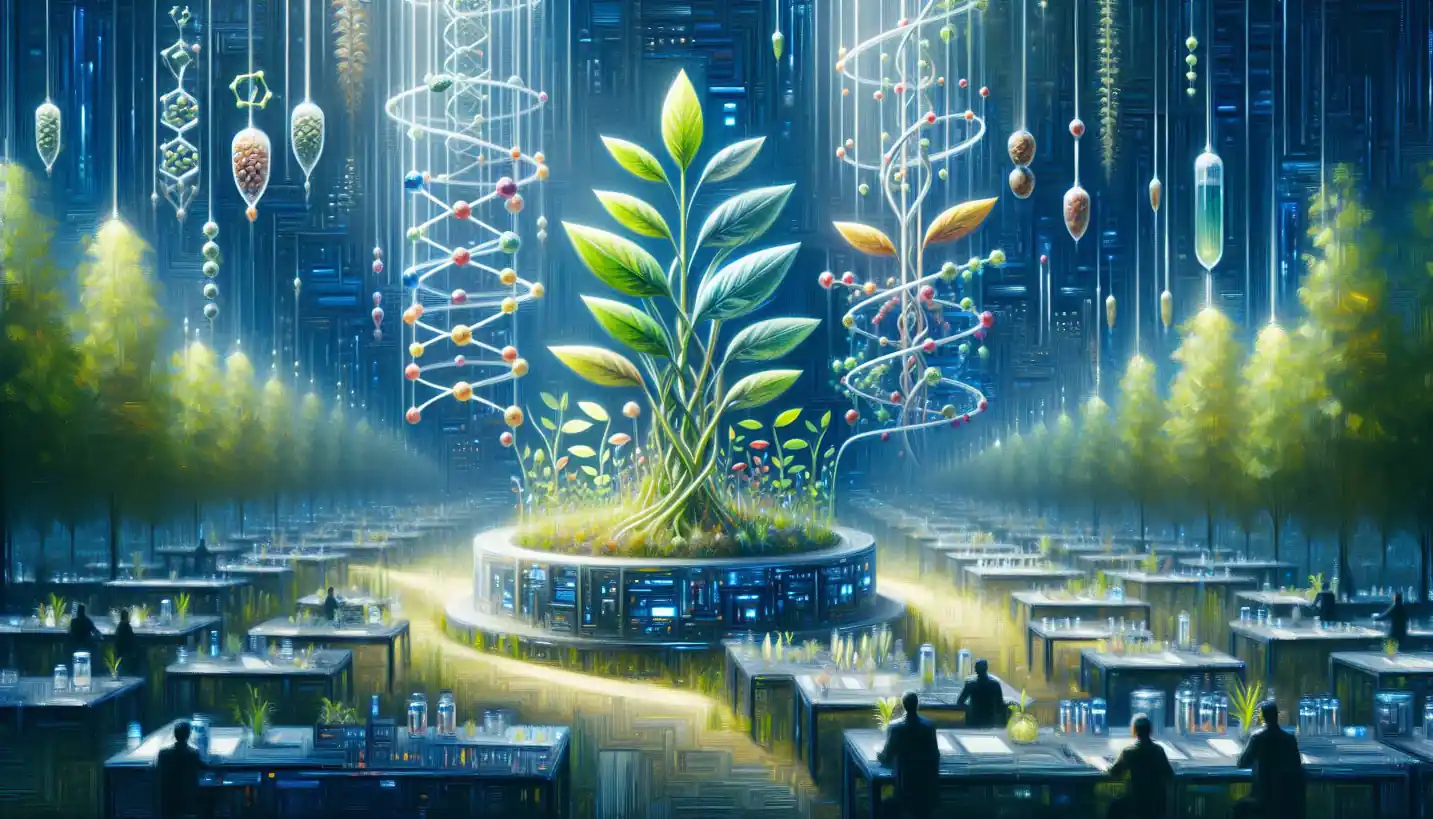· Biology · 4 min read
DNA Replication: Unraveling the Secrets of Life’s Blueprint
DNA replication duplicates the blueprint of life, ensuring genetic information is passed on. Discover the complex choreography behind this crucial process.

Picture this: a tiny factory buzzing with activity, where precise workers copy a complex set of instructions. This is what happens inside our cells during DNA replication. It’s a process at the heart of biology and biochemistry, ensuring that every new cell gets an exact copy of our genetic code.
The Blueprint of Life
DNA, or deoxyribonucleic acid, is like a recipe book containing all the secrets for building and maintaining an organism. Every cell in your body holds a copy of this book. But how does this process work? How do these biological “copy machines” ensure fidelity and efficiency?
The Remarkable Double Helix
First, let’s chat about DNA’s structure. Imagine a spiral staircase, where each step is made of paired molecules called bases. There are four bases—adenine (A), thymine (T), cytosine (C), and guanine (G). Adenine always pairs with thymine, and cytosine pairs with guanine. These base pairings form the rungs of the staircase, while the sides are sugar and phosphate molecules. This double-helix structure was famously uncovered by James Watson and Francis Crick in 1953.
The Beginning of Replication
So, how does replication get started? Picture a zipper, slowly opening to reveal two separate strands. An enzyme called helicase unwinds the double helix, breaking the hydrogen bonds between the base pairs. This creates a “replication fork,” a Y-shaped structure that serves as the starting line for replication.
Machines on the Move: DNA Polymerase
Enter DNA polymerase, the star of the show. This enzyme reads the exposed bases and fetches the corresponding partners from a pool of available molecules. It works tirelessly to add these new bases, crafting a complementary strand for each original strand. Think of it as a meticulous artist, perfectly recreating a masterpiece line by line.
But there’s a small hitch: DNA polymerase can only add new bases in one direction. This creates a bit of a challenge because the two original strands are oriented in opposite directions. To tackle this, replication occurs differently on each strand.
Leading and Lagging Strands
The strand moving seamlessly in the direction DNA polymerase is comfortable with is called the leading strand. For this strand, replication is smooth sailing, a straightforward process.
However, the other strand, known as the lagging strand, is trickier. Since it runs in the opposite direction, DNA polymerase must work in short segments. These are called Okazaki fragments, named after the scientist Reiji Okazaki who discovered them. Imagine walking backward and having to take breaks to turn around—it’s a bit like that.
An enzyme called DNA ligase later stitches these fragments together, ensuring the newly crafted copy is as seamless as the original.
Proofreading the Masterpiece
You might wonder, with such complexity, how often do mistakes happen? Surprisingly, they’re quite rare. DNA polymerase has a built-in proofreading ability, much like a spell-checker in your word processor. It double-checks each new base, correcting errors to maintain accuracy.
The Significance of DNA Replication
Now, you may ask, why is this process so crucial? DNA replication is the cornerstone of growth, development, and repair. When you scrape your knee, it’s DNA replication that helps generate new cells to heal the wound. When a tree grows, it’s this precise copying that ensures each leaf carries the plant’s genetic instructions.
Challenges in Replication
Despite its precision, DNA replication faces challenges. Environmental factors, like UV light or chemicals, can cause damage that leads to replication errors. Our cells have repair mechanisms to handle these issues, but some damage can slip through, occasionally leading to diseases like cancer.
Discoveries and Future Horizons
The study of DNA replication doesn’t just stay in textbooks. Scientists are continuously uncovering its complexities, leading to innovations in medicine and biotechnology. For instance, understanding replication better could improve cancer treatments by targeting the replication of cancerous cells.
Furthermore, researchers are exploring synthetic biology to manipulate DNA replication for creating biofuels or medicines. Imagine a future where DNA instructions could engineer processes to solve critical human challenges.
Final Thoughts: The Continuing Mystery
DNA replication, a process buzzing silently within you, is fundamental to the continuity of life. Each time you blink, breathe, or grow, intricate molecular ballet ensures your genetic blueprints are preserved and passed on.
Isn’t it fascinating to think of the tiny cellular machines at work, their relentless pursuit of perfection? As we delve deeper into the microcosm of DNA, who knows what secrets we might reveal next? This tiny world keeps astonishing us, reminding us of the complexity and beauty of life’s blueprint.



